
- Shandong Loyal Industrial Co.,Ltd.
- SHORT-CUT PASTA PRODUCTION LINE LONG-CUT PASTA PRODUCTION LINE INSTANT PASTA PRODUCTION LINE
Home> Application> The Ultimate Guide To Dry Pasta Production Lines In 2024

The Ultimate Guide To Dry Pasta Production Lines In 2024
Shandong Loyal Industrial Co., Ltd. has incorporated advanced technologies from Tecalit and Lineapasta in the production of its macaroni.In the ever-evolving landscape of pasta manufacturing, the journey from traditional methods to cutting-edge technology has been nothing short of revolutionary. This introduction sets the stage for exploring the challenges and opportunities that define modern pasta production, emphasizing the need for innovative solutions.
The historical overview delves into the origins of pasta production, tracing its transformative journey from manual processes to the advanced methods of today. Understanding this evolution is crucial for appreciating the leaps in efficiency and quality that fully automated dry pasta production lines bring to the industry.
This section establishes the central theme of the article – the crucial role of automation in addressing contemporary challenges in pasta manufacturing. By emphasizing the importance of achieving high efficiency, it sets the foundation for exploring how fully automated systems redefine the production landscape.
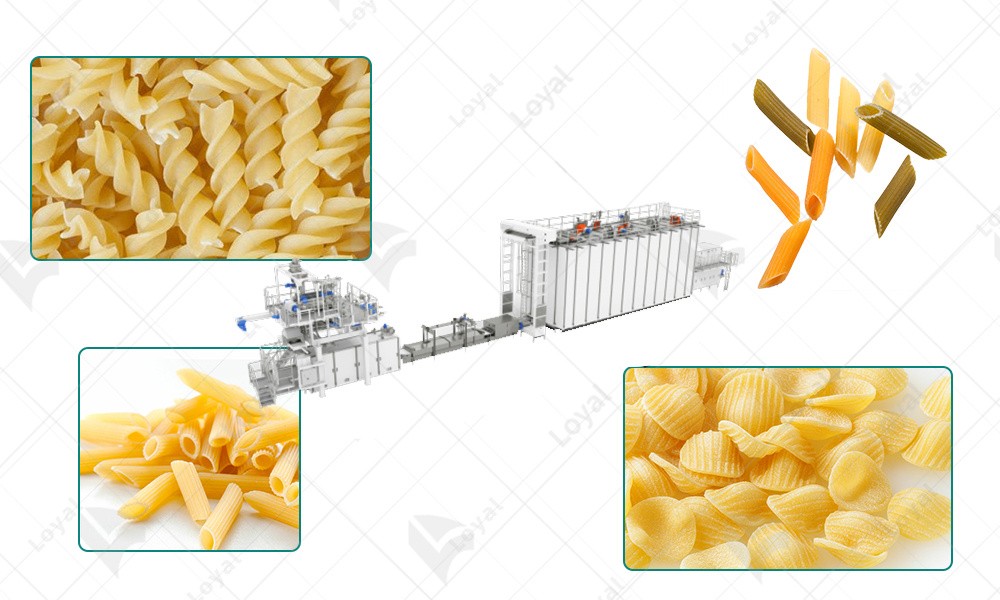
Fully Automated Dry Pasta Production Lines: Technological Marvel
The technological marvel of fully automated dry pasta production lines is at the heart of this section. By defining full automation and examining the integration of advanced technologies, we uncover the intricacies of these systems that elevate efficiency and quality to unprecedented levels.
Here, we delve into the very concept of full automation, elucidating how it transforms the pasta manufacturing process. The integration of advanced technologies into every stage of production sets the stage for a seamless, efficient, and precise operation.
This subsection explores the cutting-edge features that make fully automated dry pasta production lines a technological marvel. From smart sensors to adaptive control systems, we dissect the impacts of these technologies on enhancing efficiency and ensuring top-notch product quality.
Achieving Ultimate Efficiency
The quest for ultimate efficiency takes center stage in this section, where we define the concept and illustrate how fully automated processes play a pivotal role in reaching this goal. Precision in production becomes a focal point, showcasing how these systems consistently deliver superior outcomes.
Unpacking the idea of ultimate efficiency, we discuss the benchmarks that define it in modern pasta manufacturing. The integration of fully automated systems emerges as a key strategy for meeting and surpassing these efficiency goals.
Highlighting the importance of precision in crafting high-quality dry pasta, this subsection examines how fully automated systems ensure a level of consistency and accuracy that was once unimaginable. Precision becomes the hallmark of efficiency.

Success Stories and Case Studies
This section brings the theoretical concepts into the practical realm, showcasing success stories and real-world examples of fully automated dry pasta production lines making a tangible impact on efficiency and productivity.
By delving into case studies, we witness the successful integration of fully automated systems in pasta factories. Manufacturers, including San Giorgio and Great Value, demonstrate how these systems accelerate production and enhance product consistency.
Assessing the broader impact, we explore how fully automated systems are reshaping the dry pasta production industry. These success stories serve as beacons, guiding other manufacturers toward embracing this transformative technology.
Future Trends and Innovations
Peering into the future, this section anticipates emerging technologies and innovations that will further elevate fully automated dry pasta production lines.
Insights into forthcoming technological advancements shed light on the next phase of innovation in dry pasta production. Anticipated developments promise even greater efficiency and adaptability.
In alignment with the growing emphasis on sustainability, this subsection discusses how fully automated processes are evolving to meet eco-friendly standards, contributing to a greener future for pasta production.
FAQs: Frequently Asked Questions about Dry Pasta Production Lines
As we conclude our exploration of fully automated dry pasta production lines, let's address some common questions that may arise regarding this transformative technology.
1. Q: How do fully automated dry pasta production lines differ from traditional methods?
- *:*Fully automated systems leverage advanced technologies to streamline and optimize every stage of pasta production, ensuring precision, efficiency, and consistency. Unlike traditional methods, these systems minimize manual intervention, leading to enhanced productivity and product quality.
2. Q: Can small-scale pasta manufacturers benefit from fully automated production lines?
- *:*Absolutely. While fully automated systems are often associated with large-scale operations, advancements in technology have made them adaptable to varying production scales. Small-scale manufacturers can benefit from increased efficiency, reduced operational costs, and improved product consistency.
3. Q: How do fully automated processes contribute to sustainability in pasta production?
- *:*Sustainability is a growing concern in the food industry. Fully automated processes play a role in sustainability by optimizing resource utilization, minimizing waste, and incorporating eco-friendly practices. The integration of energy-efficient technologies further contributes to a greener and more sustainable pasta production environment.
4. Q: Are there specific challenges associated with implementing fully automated dry pasta production lines?
- *:*While the benefits are substantial, challenges may include the initial investment cost, staff training, and potential resistance to change. However, the long-term advantages in terms of increased efficiency, reduced operational costs, and improved product quality often outweigh these challenges.
5. Q: Can fully automated systems accommodate different types of pasta products?
- *:*Yes, one of the strengths of fully automated dry pasta production lines is their versatility. These systems can be configured to produce various pasta shapes and types, providing manufacturers with flexibility to meet diverse market demands.
6. Q: How have renowned pasta brands, such as San Giorgio and Great Value, benefited from fully automated processes?
- *:*Both San Giorgio and Great Value have successfully implemented fully automated systems, experiencing notable improvements in production efficiency, product consistency, and overall competitiveness. Their success stories serve as benchmarks for the industry, showcasing the transformative impact of adopting advanced technologies.

Conclusion
In conclusion, the journey through the realms of fully automated dry pasta production lines has uncovered a technological revolution that goes beyond mere innovation. It represents a paradigm shift in the way pasta is manufactured, elevating efficiency, precision, and sustainability to new heights.
As manufacturers embrace these advancements, the industry moves closer to a future where pasta production is not just about meeting demand but doing so with unparalleled efficiency and environmental consciousness. The integration of fully automated systems is not merely a choice; it is a strategic imperative for those seeking to future-proof their pasta production endeavors.
In the spirit of constant evolution, the journey continues. As emerging technologies and sustainable practices become more prevalent, the pasta production landscape will undoubtedly witness further transformations. For now, the fully automated dry pasta production lines stand as beacons of progress, guiding the industry toward a future defined by efficiency, precision, and sustainability.
Contact Us

- Shandong Loyal Industrial Co.,Ltd.
- Telephone+86 13176674591
- Email[email protected]
- WhatsApp+86 13176674591
- WeChat13176674591
- AddressC623, Jiahui Global Plaza, No. 548, Beiyuan Street, Tianqiao District, Jinan City, Shandong Province
- Factory AddressADD -300m North of Zhangxia Industrial Park, Binhe Road, Zhangxia Town, Changqing District, Jinan
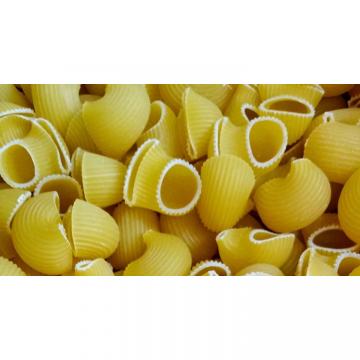

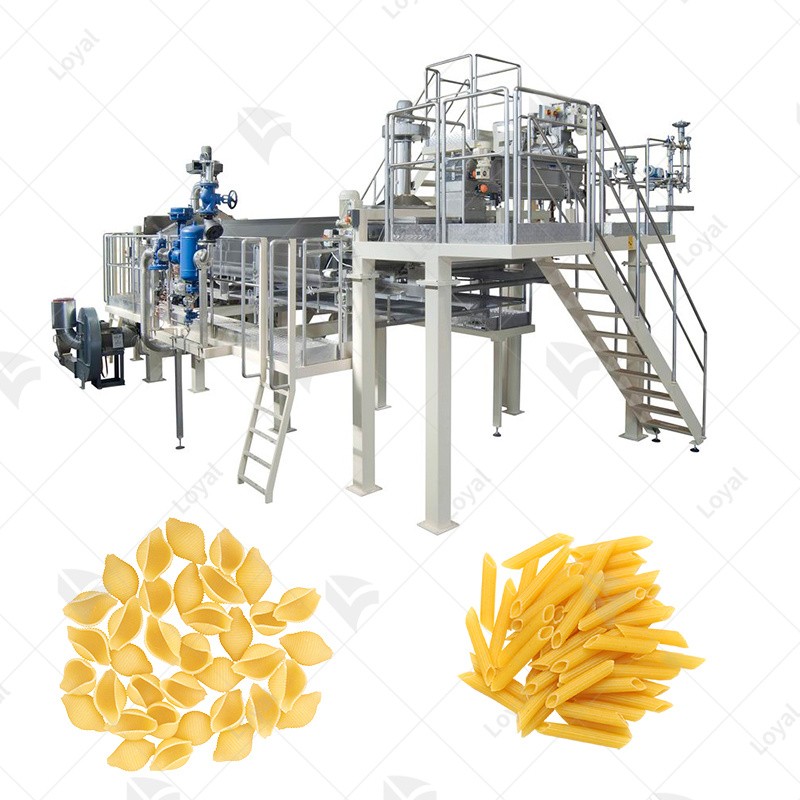

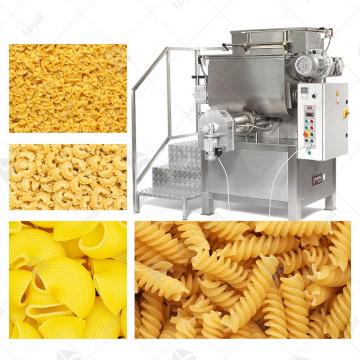
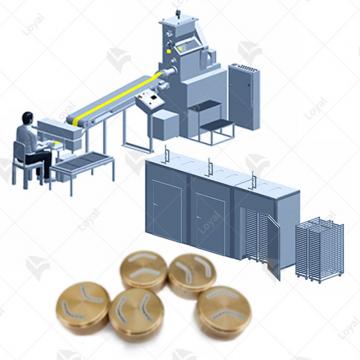 Combined Automatic Pasta Sheeter
Combined Automatic Pasta Sheeter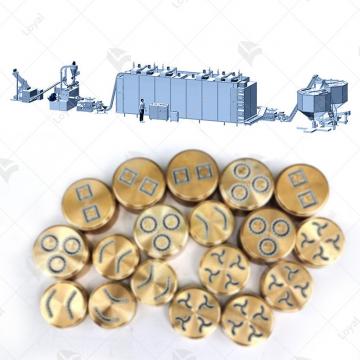 Macaroni Pasta Production Line
Macaroni Pasta Production Line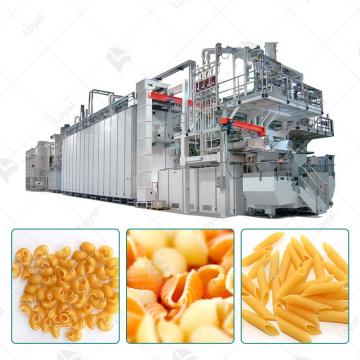 VACUUM PASTA EXTRUDER
VACUUM PASTA EXTRUDER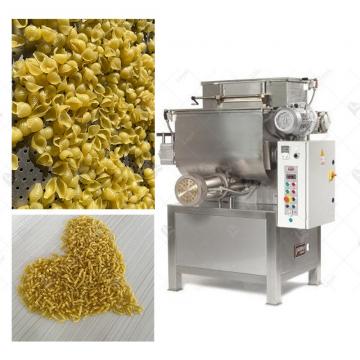 PRECOOKED PASTA PRODUCTION LINE
PRECOOKED PASTA PRODUCTION LINE